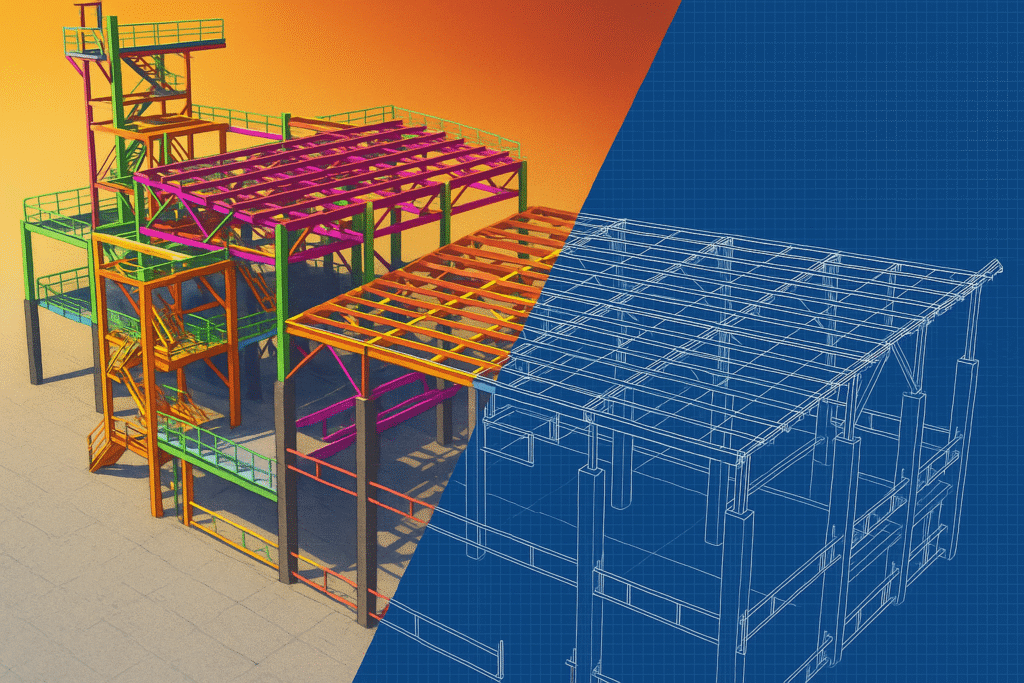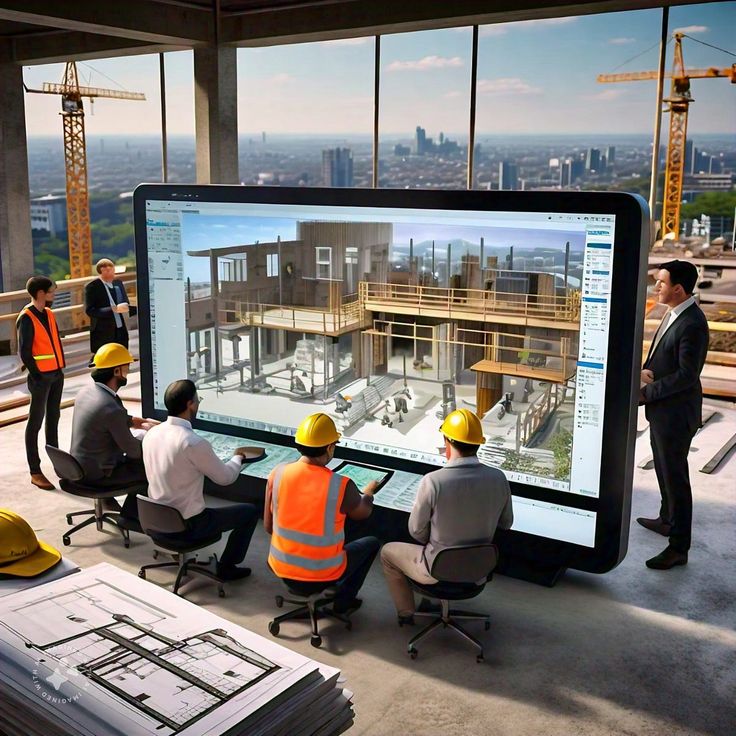The field of architecture, engineering, and construction (AEC) is changing more rapidly than ever, and at the heart of this change is Building Information Modeling (BIM).
What is BIM, though?
In the simplest terms, BIM, which stands for Building Information Modeling, is a digital culture in which professionals design, document, and manage a project throughout its lifecycle. By developing intelligent 3D models of the space, teams can visualize and coordinate everything from design and structure to plumbing, electrical, and maintenance needs all in one place.
This means that BIM is much more than just a design tool – it is the basis for digital transformation in construction, connecting people, data, and technology to streamline project delivery and create better project outcomes.

Upcoming BIM Industry Trends
The BIM environment is evolving quickly, as advances in technology, tools, and workflows change how people do their work.
Here are some of the biggest trends that will influence the industry in 2025 and beyond.
1. Cloud-Based BIM Platforms
Building Information Modeling (BIM) has changed from a boutique tool to an industry standard. One of the major changes has been the development of cloud-based BIM platforms. Teams can now easily work together to create and modify a project, even from different geographic locations.
Cloud BIM also enables each stakeholder to see and access the most current information about the project. This increases overall transparency of the project and improves communication flow. This is especially useful for large multi-stakeholder projects, where coordination and versioning can be difficult.
2. Data Analytics Within BIM
Up-to-date BIM models hold vast amounts of data — and organizations are now figuring out how best to use that data.
Data analytics in BIM helps project teams analyze and extract meaningful insights about project performance, leading to better decision making at every project stage.
By analyzing BIM data, teams can:
Forecast project risk (or delay)
Spot cost and time inefficiencies
Improve design quality and accuracy
Combining analytics and BIM translates data into data driven, error-free workflows that make projects more predictable and efficient.
3. Sustainability and Green BIM
Sustainability is now more than a buzzword — it is a duty.
BIM tools are analyzing design impacts, optimizing energy performance, and selecting sustainable materials, before construction, at the concept stage.
This helps AEC professionals to design and build environmentally responsible, resource-efficient buildings that are aligned with global green standards.
4. Integration of Emerging Technologies
The future of Building Information Modelling (BIM) is integration – the unification of technologies, such as Artificial Intelligence (AI), Machine Learning (ML), the Internet of Things (IoT), and more.
These integrations are allowing workflows to become smarter, from predictive maintenance and automation to real-time monitoring of a smart building.
The end result is a more connected, data-rich ecosystem where information can effortlessly flow from a digital environment to a physical environment.
5. Digital Twins and Asset Management
Digital Twins are advancing BIM to the next stage. They are virtual copies of a physical asset, updated through real time data obtained from sensors, IoT tools and analytics tools.
This enables teams to monitor operational performance, predict concerns, and optimize operations, long after the project is finished. Tools like Autodesk Tandem are now lowering the barrier to creating and maintaining Digital Twins, providing a transition between design, construction and maintenance.
6. Generative Design
Generative design employs artificial intelligence algorithms to analyze hundreds of design alternatives based on targets developed in advance such as energy performance, costs, and materials.
By inputting parameters, designers and engineers receive an automatic-time optimization of their alternatives/discovery processing; multiple options would be helpful, while often suggesting resolutions unknown to the contemporary population.
This trend does not erase the human experience, but instead opens possibilities for creativity, efficiency, and sustainability in architecture and engineering design processes.

7. Extended Reality (XR), AR, and VR
The emergence of Extended Reality (XR) which incorporates Augmented Reality (AR) and Virtual Reality (VR), is changing the way professionals engage with BIM models.
AR makes it easy to overlay 3D models on job sites in real time to increase precision and visualization.
VR offers immersive walkthroughs, allowing both clients and teams to ‘walk’ through the designs before any construction begins.
By 2025, XR will become commonplace to aid on-site collaboration, training and design approval.
8. Offsite Manufacturing and Modular Construction
Offsite Manufacturing and Modular Construction are becoming more prevalent as quicker, cleaner, and more sustainable ways to construct buildings.
BIM is essential to this process to facilitate exact digital modeling for the factory fabrication of building pieces.
This creates:
Shorter timeframes
Less waste
Higher quality
With BIM, modular construction is increasingly repeatable and more efficient – producing innovation throughout the industry.
9. BIM for Infrastructure
Although BIM started with building design, it is rapidly expanding into infrastructure projects — roads, bridges, tunnels, and water systems.
For civil engineers, BIM improves design coordination, project cost tracking, and lifecycle visibility.
Incorporating both geospatial and environmental data in BIM environments leads to more resilient, sustainable, and data-oriented infrastructure planning.
What’s Next for Architects, Civil Engineers, and MEP Engineers
For Architects
The future of architecture is intrinsically linked to BIM.
Architects will increasingly leverage generative design, performance simulation, and sustainability analysis in order to arrive at smarter, more efficient designs.
In addition, architects will also be responsible for defining data standards and maintaining BIM models that are accurate, accessible, and valuable throughout the entire lifecycle of the project.
For Civil Engineers
Civil engineers are now utilizing BIM to execute and manage transportation networks, utilities, and other large-scale infrastructure projects. Civil engineers must understand how to tie 3D models into geospatial data, which will allow for accurate planning and maintenance of infrastructure assets over time. BIM will also support civil engineers in creating digital twins of infrastructure assets which can be used for long-term monitoring and predictive maintenance of infrastructure assets.
For MEP Engineers
For MEP professionals, BIM provides unparalleled accuracy and coordination among engineers. Working in a single shared design model allows MEP engineers to reduce clashes and optimize energy performance, as well as integrate into architectural and structural elements. MEP engineers will need to have a strong grasp of BIM tools to design better, faster alternatives in systems to assist in managing their performance over the lifespan of a building.
Conclusion
There doesn’t need to be any debate as to ‘if’ it will happen: BIM is a foundational part of a new digital era in the construction industry in AEC. Enhancing methodologies through new technologies such as AI, digital twins, AR/VR, and modular construction are dictating a change in how we design, build, and maintain the built environment. The AEC industry will be more intelligent and collaborative based on data, all because of the introduction of BIM technologies. The professionals who invest in upskilling and gaining an understanding related to these BIM trends will stay ahead in shaping a more efficient, sustainable, and innovative future of construction.



